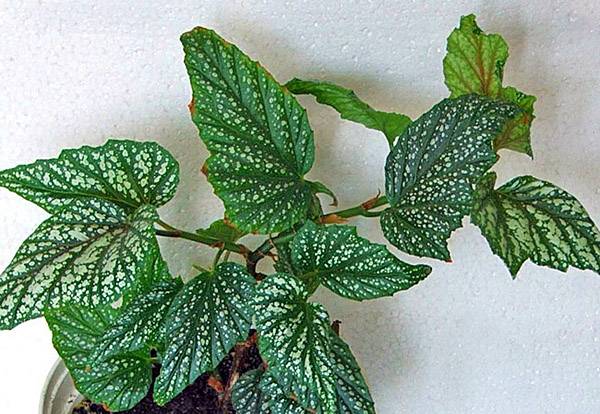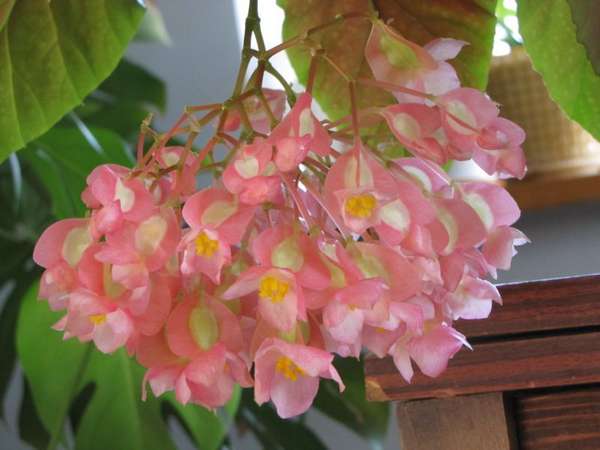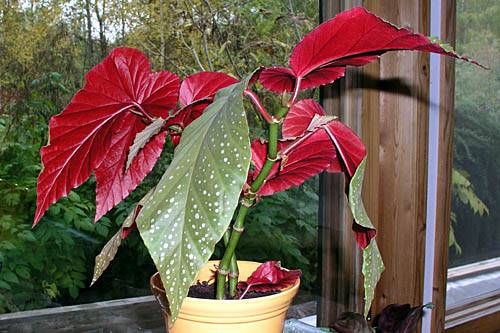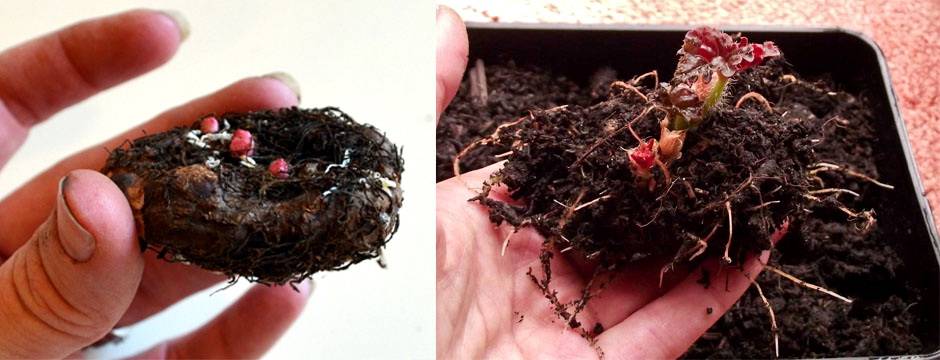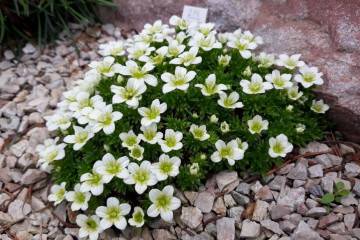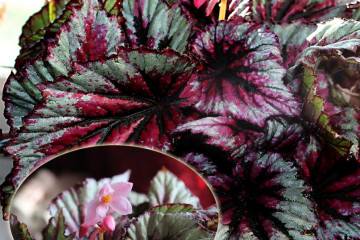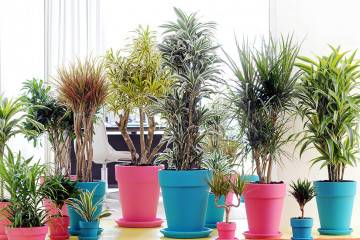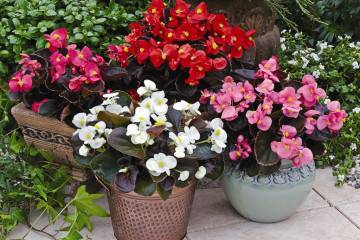Begonia Coral - planting and care at home
Content:
Coral begonia has very beautiful leaves. They are covered with white spots. Sometimes the plate is yellow-green, sometimes it is burgundy-green. It's a paradox, but the protective coloration helps her to remain always in the spotlight. To win the status of a favorite on the windowsill, she is ready to delight those around her with lush flowering all year round.
Common varieties
The begonias family is a variety of beautiful varieties. Asymmetrical foliage, cut at the edges, evokes associations with maple. Coral begonia can grow up to 1 meter in height.
They attribute it to shrubs, semi-shrubs. The stems of many species are covered with red villi. This is a visiting card of the family members. Coral begonia has smooth stems. Its business card is the unique beauty of bunch-shaped inflorescences and spotted leaves.
Healing properties
Coral begonia sap has been found to contain a high content of various plant acids. There is even sorrel in it, the one that makes green borscht incredibly tasty.
Interesting fact! Its flowers can be added to salad. They are a little sour and will add variety to the flavor bouquet. In the heat, they perfectly quench thirst.
Also in the juice contains ascorbic acid, succinic, oleic and linoleic. In the Antilles, the homeland of the plant, local healers have long been preparing medicines for injuries and bruises from its various parts. With the popularization of coral begonia, integration into the floriculture tradition, it began to be used in folk medicine in other countries.
It is believed that decoctions, infusions with its juice help restore joint mobility, strengthen immunity, disinfect places of abrasions, bruises, accelerate wound healing, and reduce the risk of scars and scars.
In official medicine, it is also used. The beneficial effects have been proven. Some medicines, ointments, preparations of the dietary supplement group contain this component.
Briefly about the history of appearance
This outlandish flower was brought from the Antilles by the French botanist Charles Plumier in the 17th century. It was named after Michel Begon.
Features of coral begonia care at home
Begonia is sensitive to soil conditions. If it doesn't fit, the bush will grow slowly. This is also one of the main reasons why it does not bloom. It may not even survive in nutrient-poor soil without timely replanting. This does not diminish the importance of other factors. The owner must pay attention to lighting, air temperature and other parameters of the built environment.
Temperature
If the room is stable from +22 to +25, begonia will feel great.In an artificial environment with different parameters, you will only have to dream about a well-groomed appearance, splendor of foliage, flowers.
Lighting
Direct sunlight can burn the sheet. The flower needs diffused light. The standard duration of daylight hours is usually sufficient, but additional lighting can also be carried out - in order for the bush to always look great, delicate buds appear more often.
Watering
The rate at which moisture evaporates from the soil depends on the air temperature in the room, the volume of the planting container, and other factors. As soon as the top layer has dried to a depth of 1-2 cm, water the flower.
Spraying
Large leaf plates of begonia can become dusty in a week or two. Eliminate dirt with a dust removal brush, or a sponge, paint brush. Spraying does not harm it, but reduces its decorative qualities - streaks, spots of dried drops on a glossy surface may remain.
Humidity
Air humidity must be at least 70%. If you put a container with water, an aquarium, or install an air humidity regulator in the room, you can create the best conditions, completely suitable.
Priming
When there are few nutrients in the soil, humus, it becomes like a stone. Only after watering does it regain its airy texture. But this is an appearance. The air flow is still limited. The root system of begonia will not like such conditions.
You can solve the problem by buying land for indoor flowers in a florist store. Often, flower growers create a soil mixture on their own so as not to worry about the problem of disposing of previously used substrate. In this case, you can mix black soil with sand, tree bark. The acidity and air exchange rates will be restored.
Top dressing
Fertilizers are necessary for the correct formation of the root system and the aerial part of the coral begonia at different periods of life. It is difficult for her to do without them. Not all nutrients from the soil can be absorbed immediately.
Commercial fertilizers contain them in an easily digestible form. The same applies to natural analogs, on the basis of which an aqueous solution is usually prepared. It is advisable to apply top dressing once a month.
Features of care in winter, dormant period
Elegant coral begonia buds bloom most often in winter or spring. The tropical guest is sensitive to the environment. In response to a seasonal decrease in the length of daylight hours, it tends to dominate and bloom. At this time, she needs a little more vitamins, light, moisture than usual.
Flowering features
The inflorescences are like bunches of grapes. Only instead of berries, luxurious buds. The shades of the petals are varied, they can be softer or brighter. Each flower consists of 3 or 4 petals fused together.
Pruning
Only well-sharpened garden tools should be used for pruning. By caring for coral begonia in this way, you can get seedlings at the same time.
How coral begonia reproduces
To propagate a flower, you need to cut a branch and put it in water. Sometimes cuttings are germinated directly in the soil to save time. Propagation by cuttings is not the only way to get seedlings. Begonia also propagates by seed.
Transfer
It is advisable to replant the flower once a year. The soil is depleted faster than many other indoor plants.
Transfer
It is advisable to replant the flower once a year. The soil is depleted faster than many other indoor plants.
Possible growing problems and diseases
Sometimes there is an inharmonious formation of the bush.If there are too many leaves, they are massive, but there is practically no flowering, which means that the level of humidity in the room is too high.
Drops buds and leaves
When buds, foliage fall off, it is necessary to improve nutrition. Sometimes this is the first signal of a serious problem, a reaction to a pest. Coral begonias are best watched.
Leaves turn pale
A sharp change in the color of the leaves from a dark shade to a lighter shade is called chlorosis. The most common causes of this condition are:
- liming the earth in a flower pot;
- lack of nutrients;
- damage to the root system by parasitic organisms;
- too frequent, plentiful watering;
- lack of sunlight.
By gradually eliminating these factors, you can figure out what is actually happening with the flower.
The tips of the leaves dry
Withered edges on the leaves appear as the branches naturally age or when the root system is damaged. Perhaps a tick or fungus has settled in the ground.
Pests
Gray rot (Botrytis cinerea mushroom), bacterial spot (Xanthomonas bacteria) and annular spot (Hydrangea ringspot virus), powdery mildew (Erysiphe fungus) are not averse to eating begonia juice. Specialized drugs will help to cure the flower.
Signs and superstitions
According to a long-standing belief, begonia protects its owner from lies, deception, conspiracies and witchcraft. About the approaching battle with evil, negative circumstances, warns of abundant wilting of foliage. You can save her by surrounding her at this moment with more close attention, mentally thanks for the help, warning.
In general, this is a beautiful, unpretentious coral begonia plant, home care for which is carried out according to a simple scheme. Compliance with the basic rules is the key to plant health. The bedroom and living room, office and workshop will be cozy all year round thanks to begonias.
